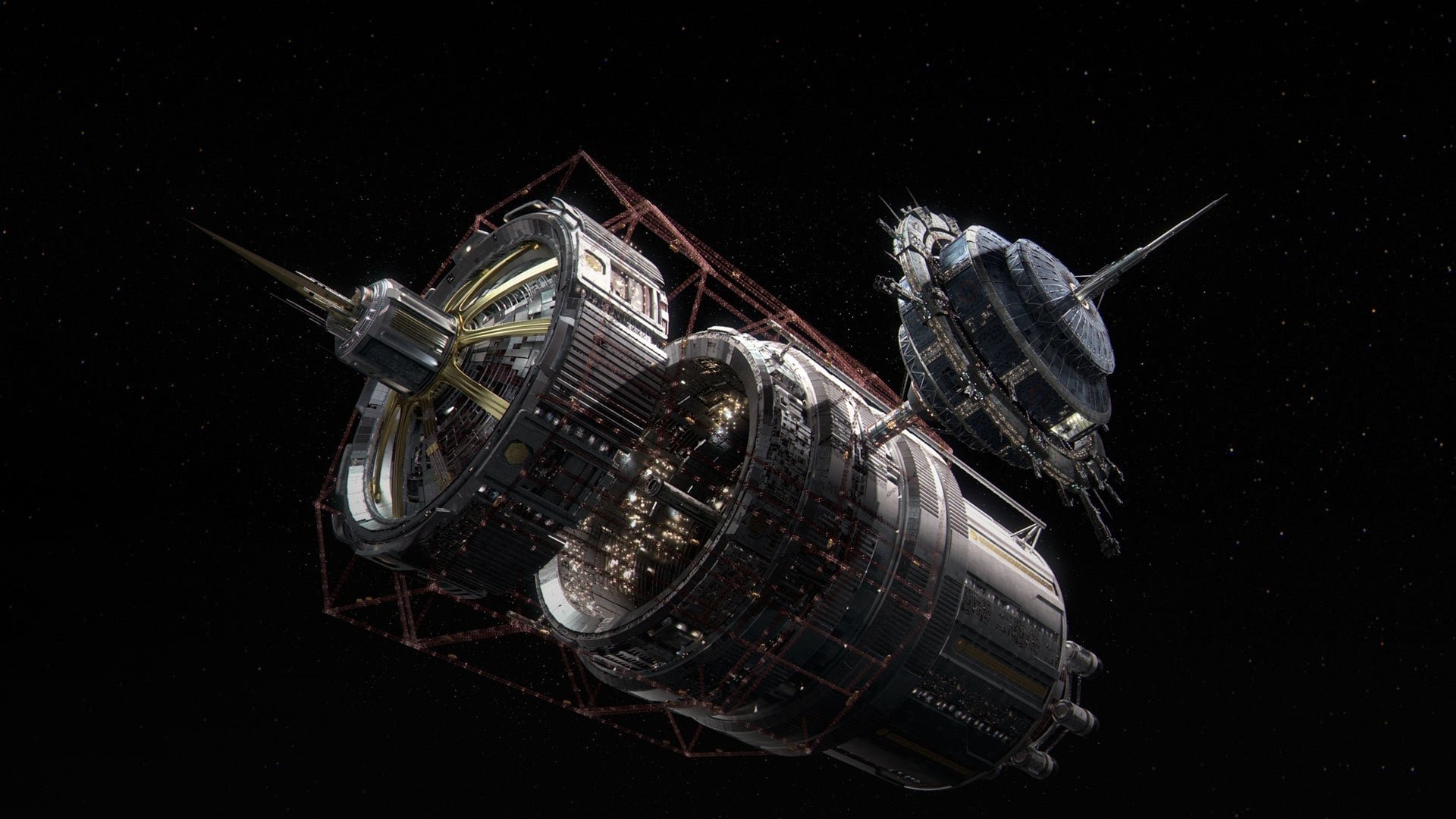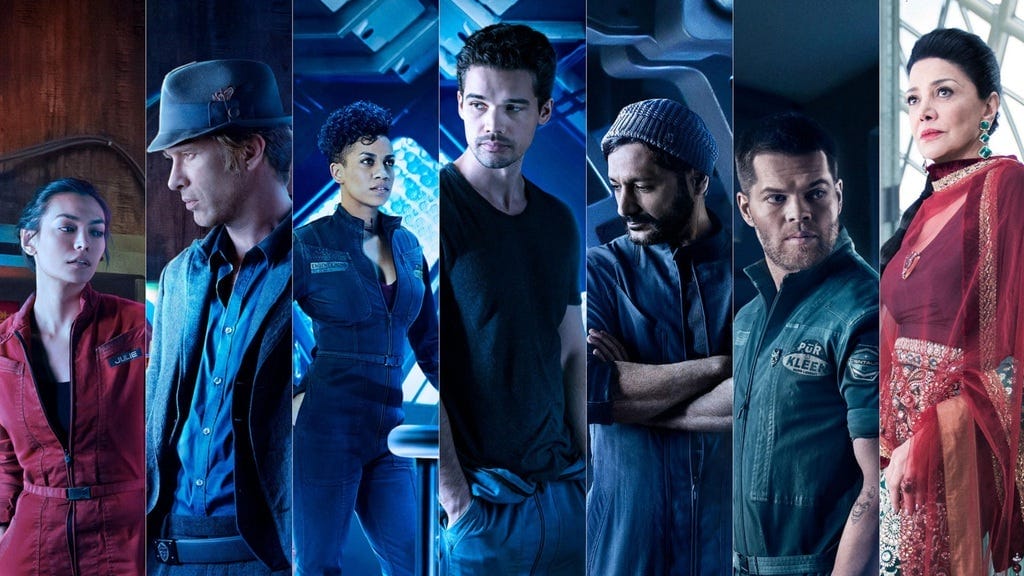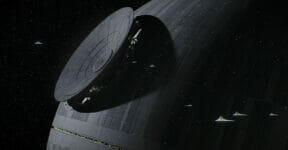Shows like Star Trek and Star Wars are great examples of “extreme” sci-fi, in the sense that they use plenty of scientific-sounding terms to describe the extreme yet otherwise fantastical technologies. Things like warp speed, hyperspeed, and teleportation are cool ideas alright, but they’re mostly imaginary. Realistic sci-fi shows are scarce, but it doesn’t mean such a show can’t exist. Take “The Expanse” as an example; it has no interplanetary instantaneous communication, the spaceships have no artificial gravity, and the space battle doesn’t look like the dogfights in World War II. The Expanse Season 1 introduces you to a lot of cool concepts on space-based civilizations that are actually scientifically accurate. The first few episodes set the tone of what you can expect in the seasons to come, and you’ll be pleased to know that the realism of space is properly maintained. Here are just a few examples of how the series gives science-approved depictions of what things might be like beyond Earth’s atmosphere.

The Spaceships
Unlike in many other space fantasies where you have superb-looking spaceships designed for near speed of light interplanetary travels, the spaceships in The Expanse are far from sleek and responsive. They are built like skyscrapers rather than flying-saucers, and they actually fly with realistic physics in mind. You’ll see neither control surfaces nor aerodynamic flight because the spaceships are moving in vacuum. The spaceships change orientation using thrusters, followed by conservation of momentum. They don’t change directions in the same fashion as fighter aircraft do. Just because most space-based battles are modeled after World War II dogfights in the Pacific, it doesn’t mean they’re scientifically accurate. The Expanse does it right.
In the first episode, the big action sequence involves a spaceship making a turn because it has to change direction to investigate a distress call. A spaceship can only change its course by a “flip and burn” procedure, which basically requires the entire ship to flip around and fire a rocket. Keep in mind that, in reality, rockets only work in one direction. If you’re speeding up in a certain direction, the most effective way to slow down is to point the rocket in the opposite direction. That’s how braking is done in space; you don’t just move up and down and make acrobatic maneuvers on a whim.
Artificial Gravity
Here is another thing you don’t see in the show: spaceships having artificial gravity, so everyone can walk around as if they’re taking a stroll in an ordinary park. Artificial gravity might seem like a simple idea, but the ability to create gravity fields out of nothing is beyond the limit of scientific plausibility. In The Expanse, the characters are depicted as standing normally only when their spaceships are accelerating. This is based on the Equivalence Principle, where gravity and acceleration can be basically indistinguishable. It has everything to do with the general theory of relativity and requires quite a lengthy explanation, but it’s scientifically accurate.
For example, the Ceres Station is constantly rotating to provide a degree of simulated gravity for everyone to walk in a more or less normal manner. The show even has a shot of a bird flying around with minimum flapping of its wings, showing that the gravity is still much weaker than on Earth. The Coriolis effect from the constant rotation should push every object slightly sideways, and it’s a good thing the show comes up with a few nods to the phenomenon. When Detective Miller pours a drink in a bar on Ceres, the liquid takes a weird path from the bottle to the glass. While such a display isn’t consistent throughout the show – probably because it would require a monumental budget to do so – the simple demonstration is proof that the show attempts to get things right.
The Battles
Again, the space battles are nothing like the dogfights in World War II or Star Wars style combats. Torpedoes in space move so quickly that making any attempt to evade is futile. The acceleration to do the evasive move probably won’t kill the crew indeed, but it’s not a practical defensive action. The space battles in The Expanse rely heavily on the pilots’ abilities to plot a course for the defense cannons to shoot down incoming missiles. Also, the gunners don’t aim the weapons manually because space is vast and dark to where it’s impossible to see any distant object at all. Gunners prioritize targets based on data.
We think what sets fantasy apart from science fiction is how the latter conforms to scientific theories and laws of physics. To some extent, the creative side of sci-fi has to limit itself within the boundary of what is scientifically (at least theoretically) possible. Most sci-fi fans won’t probably care too much if something they see on any show holds any degree of scientific accuracy and will instead focus on the action and drama that unfold, but it’s just pleasing and commendable when a show actually goes the extra mile to make sure that everything is not just pure fantasy.
Can you give other instances where The Expanse makes scientifically accurate depictions of space? Do you prefer a sci-fi show that’s scientifically accurate or playful and fantastical? We’d love to hear from you.
Other Things You Might Want to Know
We praise The Expanse as scientifically accurate fiction, but there must be inaccuracies too, right?
It’s not without faults, for sure. One of the most obvious scientific inaccuracies is the way it uses loud explosions in space, although there can’t be any sound in the vacuum of space. The Expanse is not 100% accurate, but close enough that even the most physics-savvy viewers wouldn’t shake their heads in disapproval every minute.
Why is it difficult to keep organisms alive in space?
Almost everywhere on Earth, there are plenty of little, complex processes to keep organisms (including humans) alive. Gravity helps the human body drain fluids properly, plants and oceans keep the CO2 level in check, and the molecules in the atmosphere prevent the horrible effects of radiation from direct sunlight. In space, all of those must be artificially created, and that’s no simple task.
Is Star Trek scientifically accurate?
Star Trek is one of the best sci-fi TV shows ever, but it’s not exactly hard sci-fi.
Check out other articles by month:







